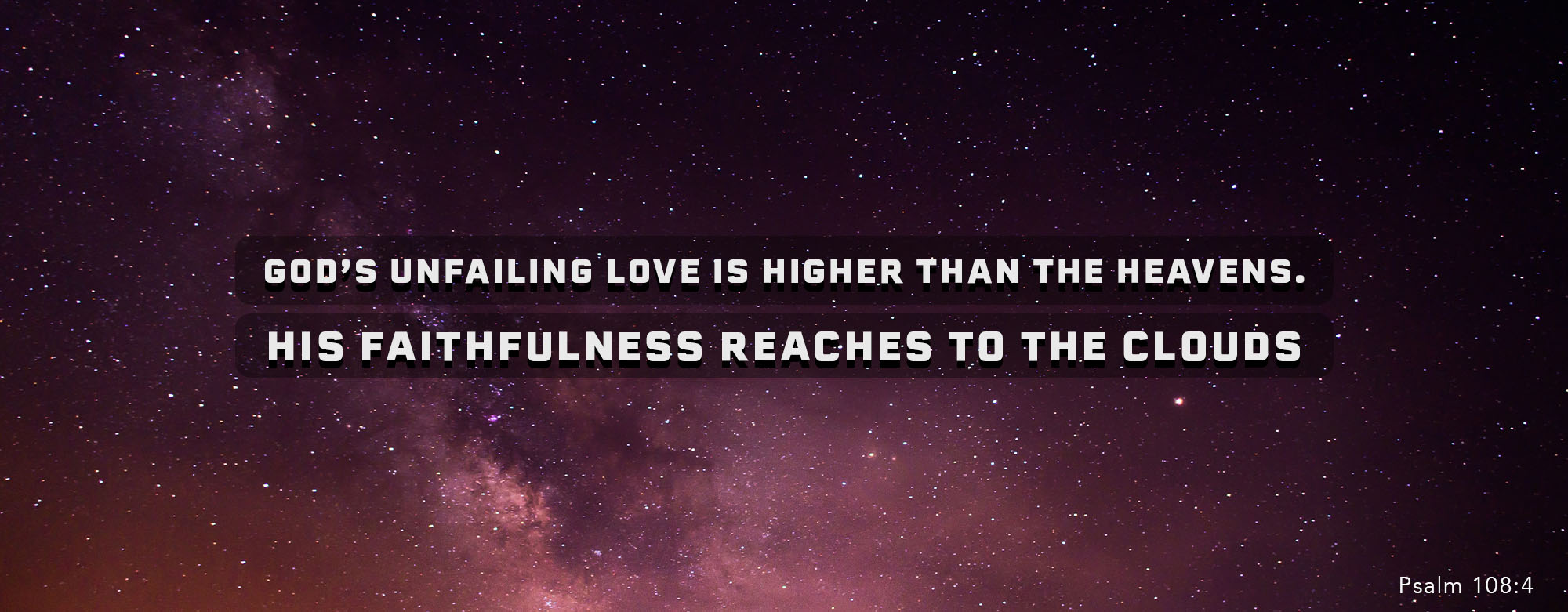

In our Living the Spirit Filled Life series Fin shared with us a valuable illustration. He recalled the time when he and Beth were admiring the stars, literally God’s canvas stretched out across the skies. As they looked up later, he was momentarily confused, there was not a star in sight. He wondered, where possibly could they have gone?
He realised that it was so dark that he could not see that there were clouds obscuring their view of the stars. As he pondered this further he was struck by how a cloud, which has significantly less mass than a star, is able to obscure even the brightest stars.
Interestingly, rarely do clouds appear in the bible without any theological analogy. The first place in the bible that clouds play a prominent role is after the flood, when God’s new covenant with humankind is represented by a rainbow in the clouds (Gen 9:12-17). Clouds continued to play a significant role in symbolising God’s presence. After the exodus from Egypt, the Israelites’ journey was led by a pillar of cloud by day described in Exodus 16:10 as ‘the awesome glory of the Lord in the cloud.’ When God reveals himself and the law to Moses at Mt Sinai his appearance is marked by a cloud (Exodus 19). Later God makes his presence known in the tabernacle – or tent of meeting – in a thick cloud (1 Kings 8:10-11). David, Israel’s first true king chosen by God, enjoyed the Spirit of the Lord’s presence which he describes like the light of the morning without any clouds:
“The Spirit of the Lord speaks through me; his words are upon my tongue. The God of Israel spoke. The Rock of Israel said to me: ‘The one who rules righteously, who rules in the fear of God, is like the light of morning at sunrise, like a morning without clouds, like the gleaming of the sun on new grass after rain.’ (2 Samuel 23:2-4)
The clouds and their obscuring of the stars (heavens) reflect both the transcendent hidden nature of God and His presence. The heavens in their mindboggling vastness capture the incommunicable glory and presence of God. It leads Psalmists to sing
For your [God’s] unfailing love is higher than the heavens. Your faithfulness reaches to the clouds. (Psalm 108:4)
All of this, of course, serves to signpost the promise of the unobstructed presence of God in the person of Jesus and his advocate the Holy Spirit. This is perhaps best represented at the transfiguration where, after Jesus is revealed in his full glory, God speaks out of the clouds identifying Jesus as his son, his chosen one (Luke 9:25). The one in whom God fulfilled his promises:
I will pour out water to quench your thirst and to irrigate your parched fields. And I will pour out my Spirit on your descendants, and my blessing on your children … I, the Lord, made you, and I will not forget you. I have swept away your sins like a cloud. I have scattered your offenses like the morning mist. Oh, return to me, for I have paid the price to set you free. (Isaiah 44:3,21-22)
It is in Jesus and through his advocate the Holy Spirit that we may meet God today without obstruction. Jesus, in his life and sacrifice, offers to carry all the burdens of our daily lives that might obscure our relationship with God, no matter how big or seemingly insignificant these burdens may seem (Matthew 11:28). The Holy Spirit promises to be the guiding principle, or star, in our lives (John 16:13). The fruit of the Spirit is the indelible sign of Christ’s presence in our lives (Galatians 5:16-26). Moreover, all this is yet another signpost, a now and not yet, to when Jesus, who having already ascended to glory, will one day return so that we can finally meet God in his full glory:
He [Jesus] was taken up into a cloud while they were watching, and they could no longer see him. As they strained to see him rising into heaven, two white-robed men suddenly stood among them. “Men of Galilee,” they said, “why are you standing here staring into heaven? Jesus has been taken from you into heaven, but someday he will return from heaven in the same way you saw him go!” (Acts 1:9-11)
Links
Dunfermline West Baptist Church
Chalmers Street, Dunfermline
KY12 8DG